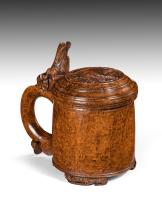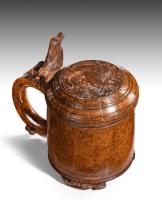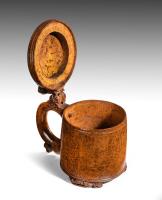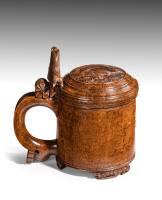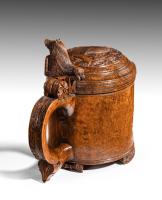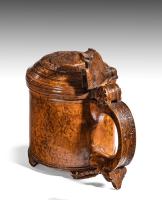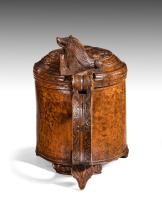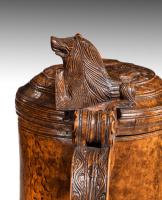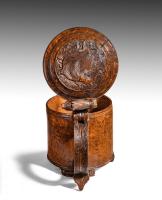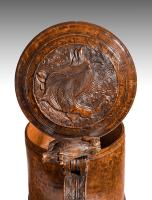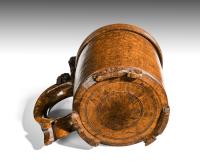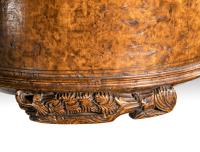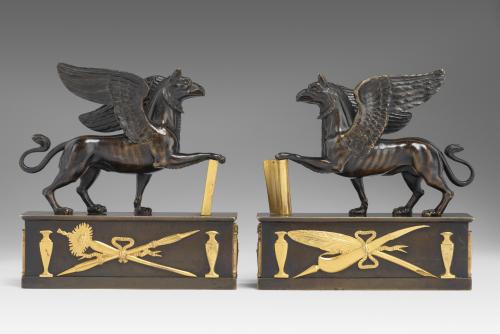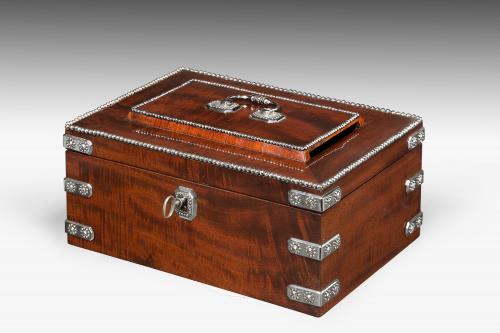
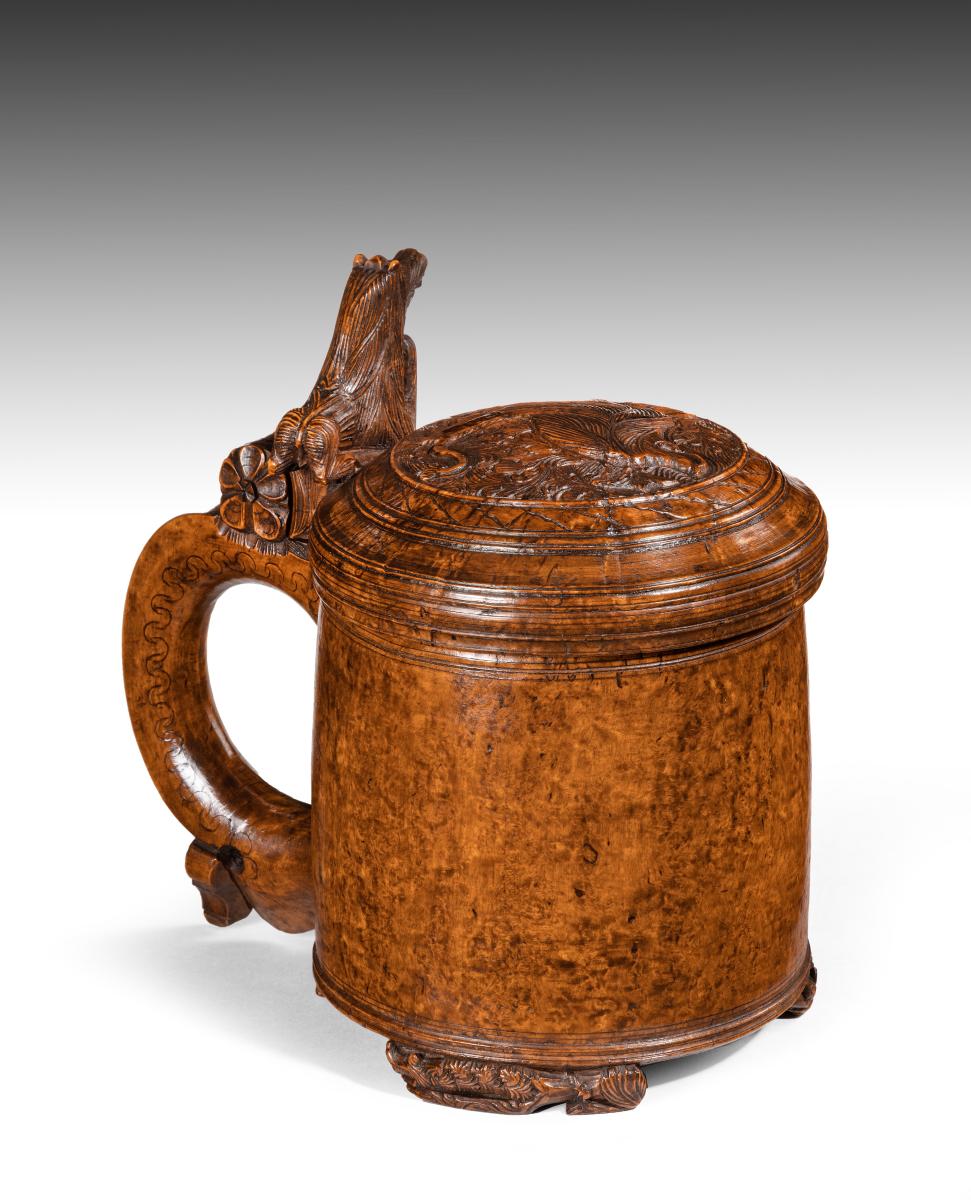
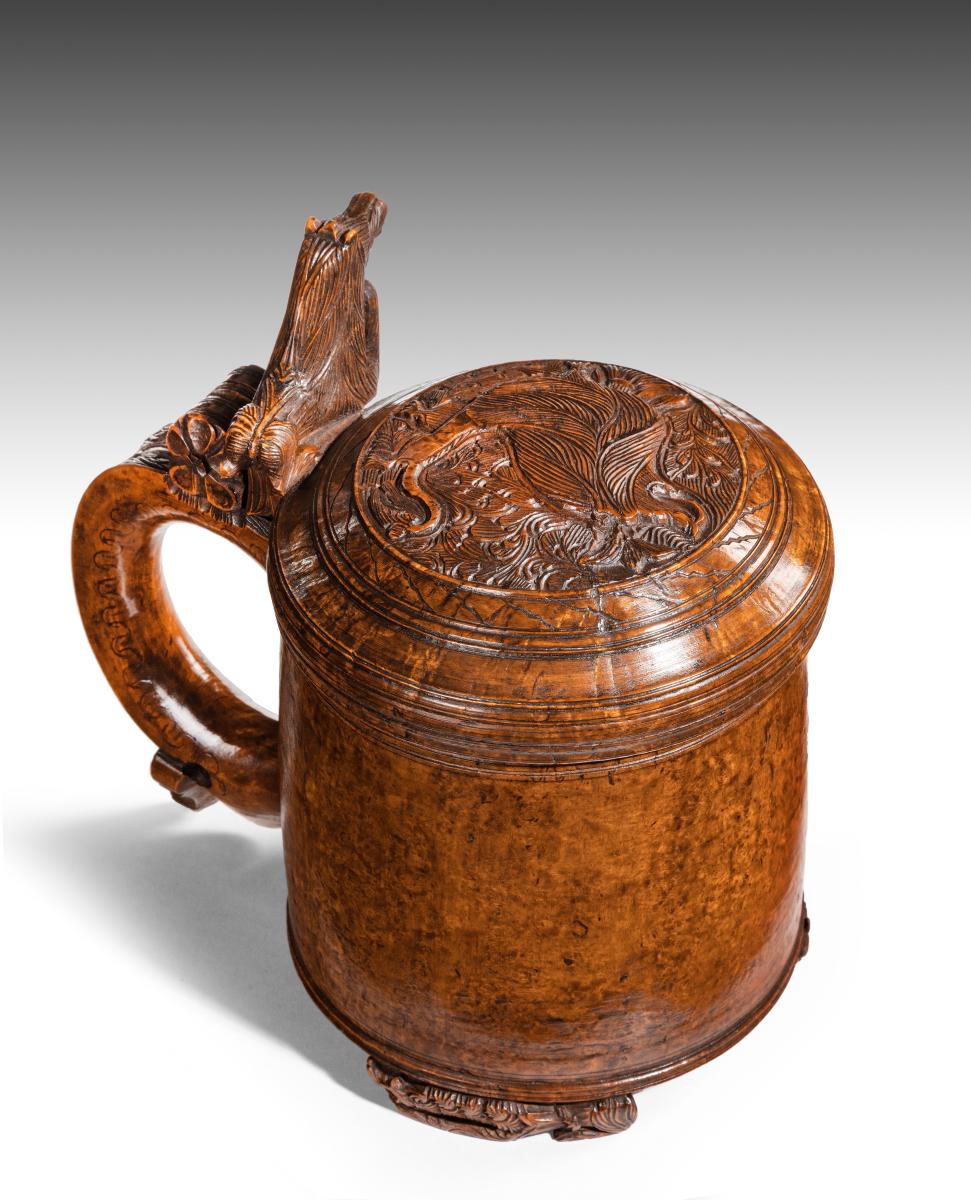
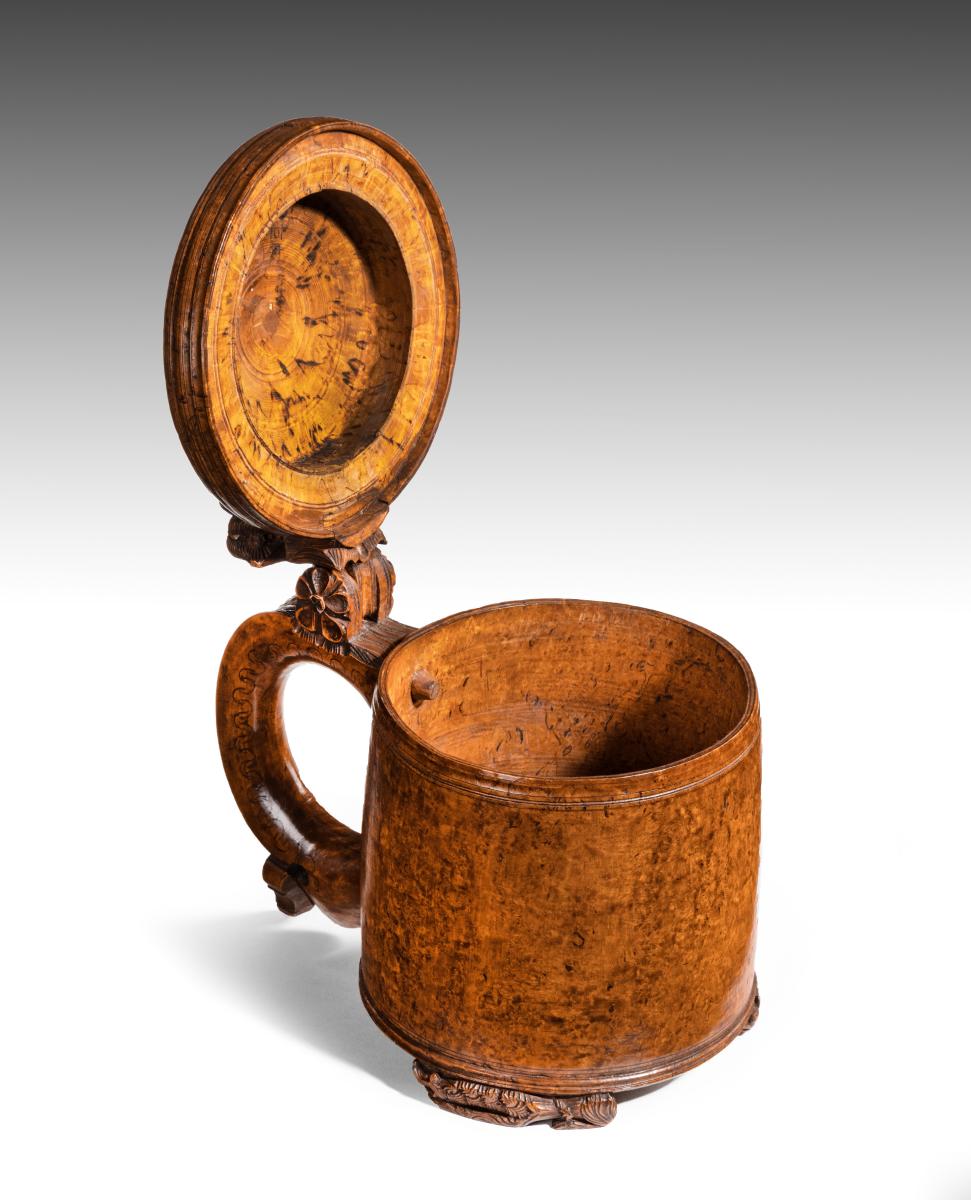
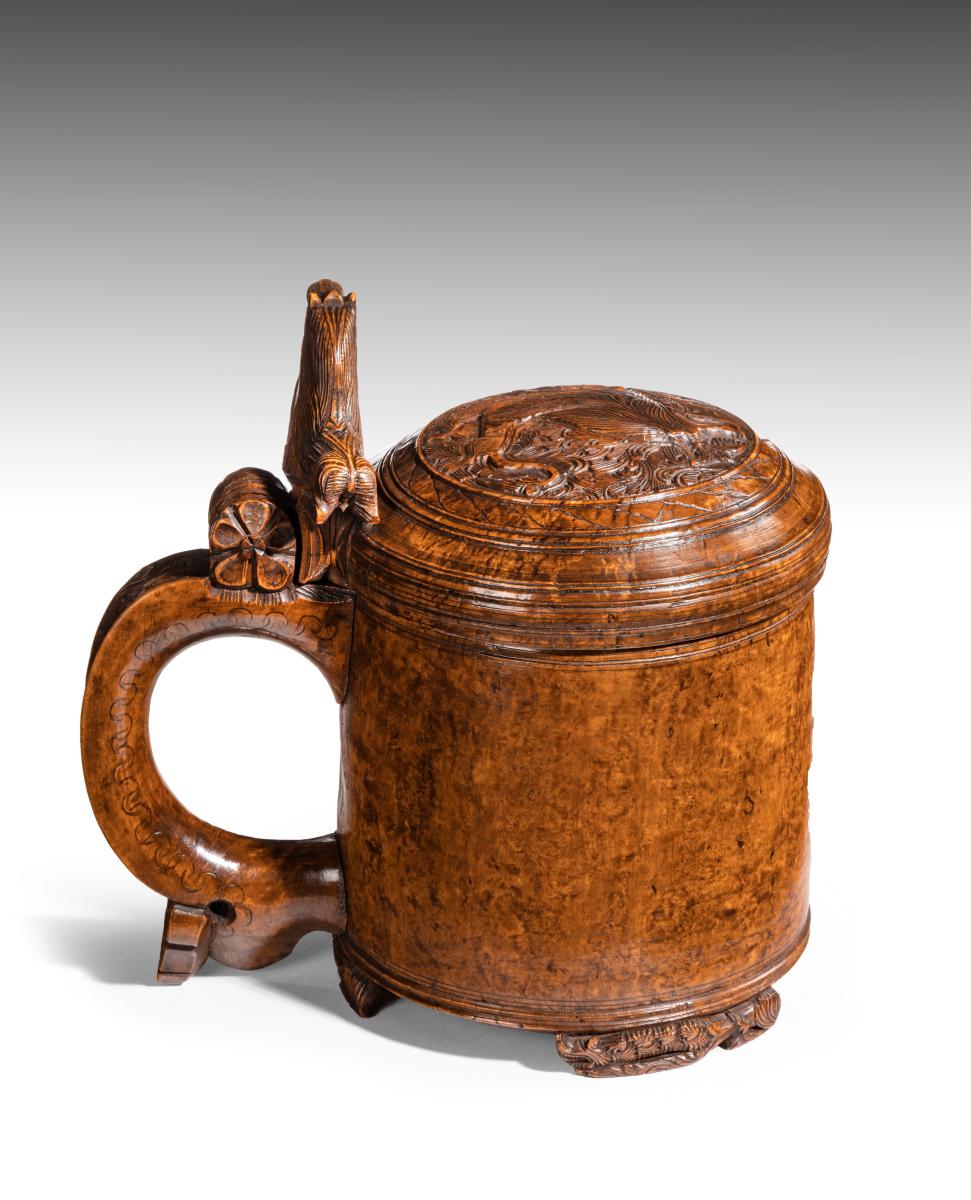
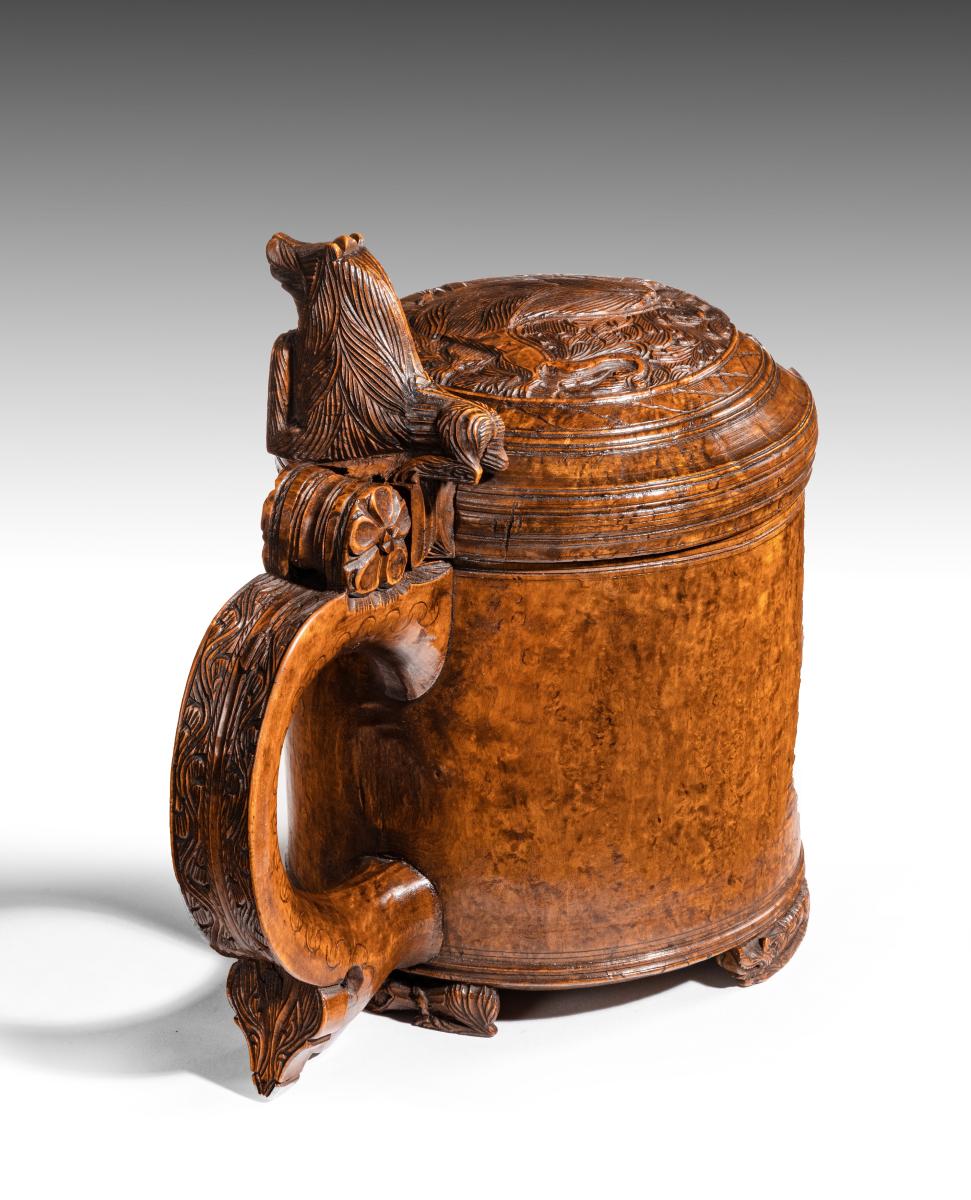
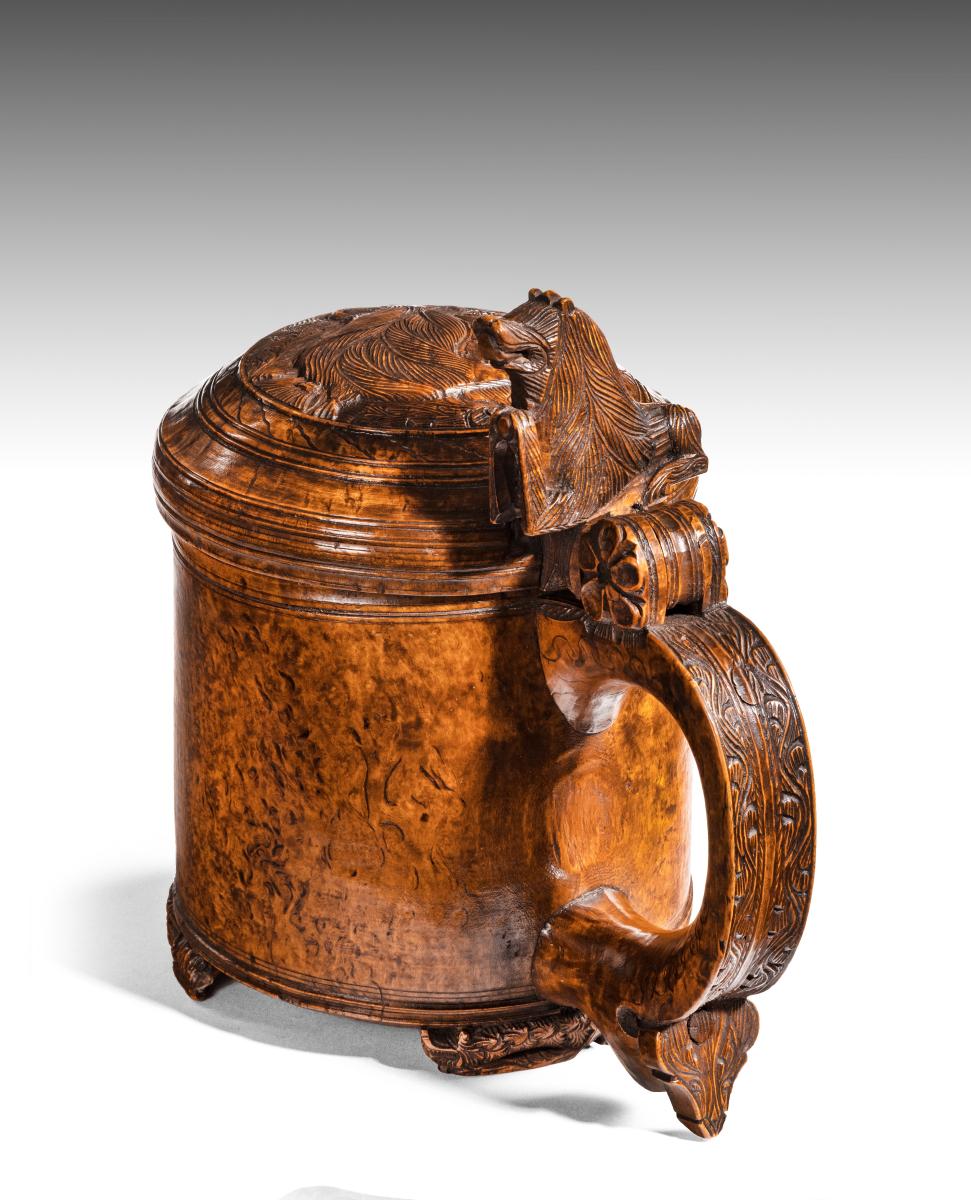
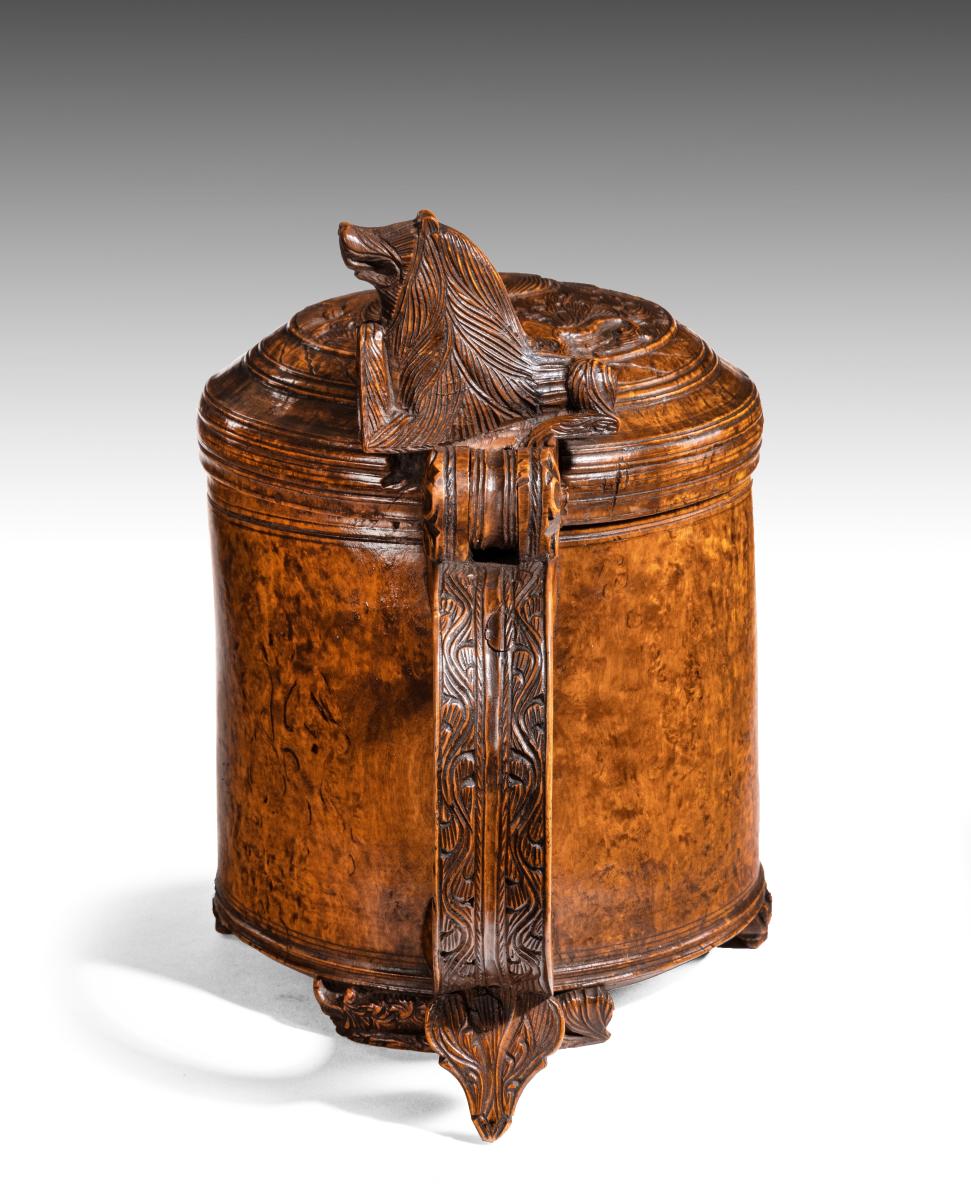
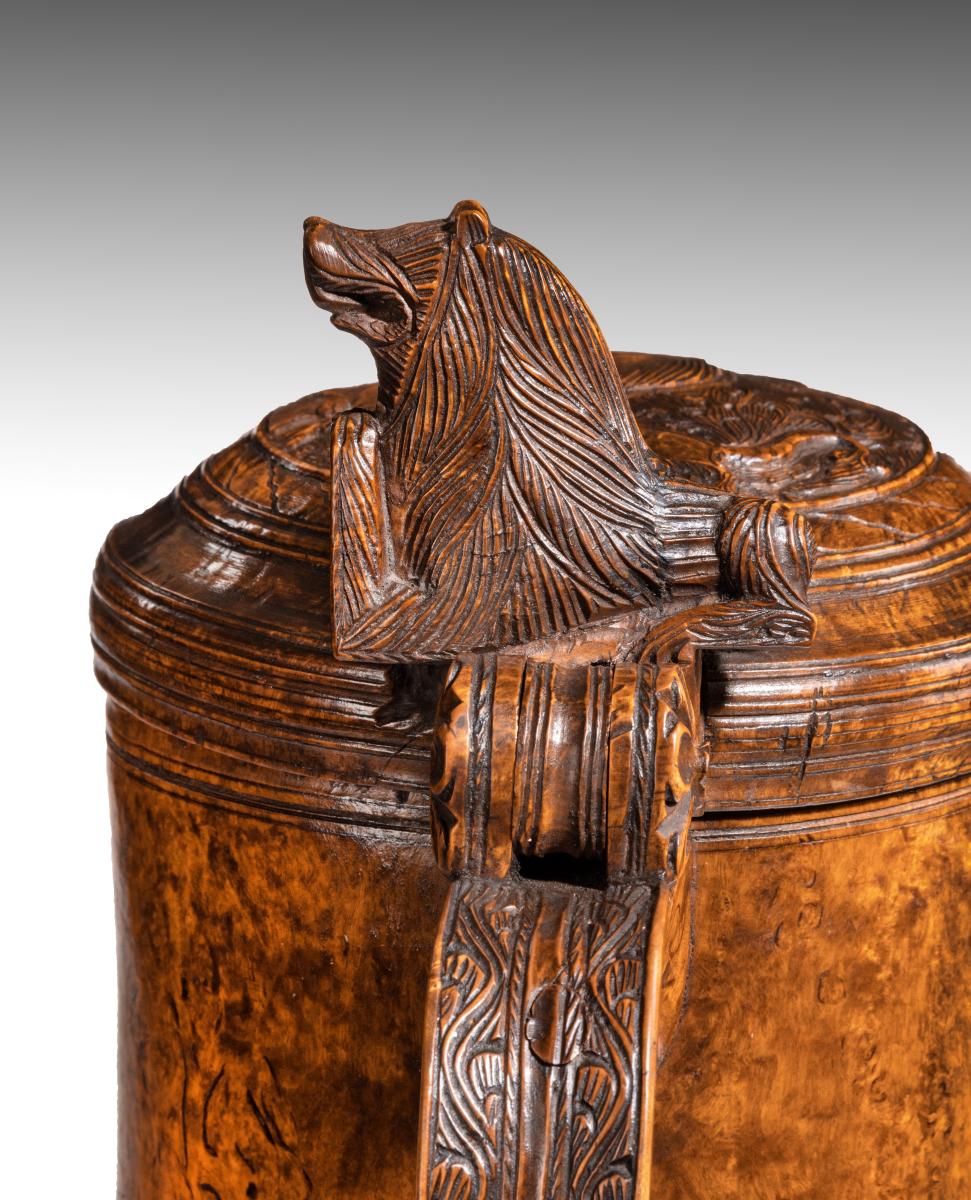
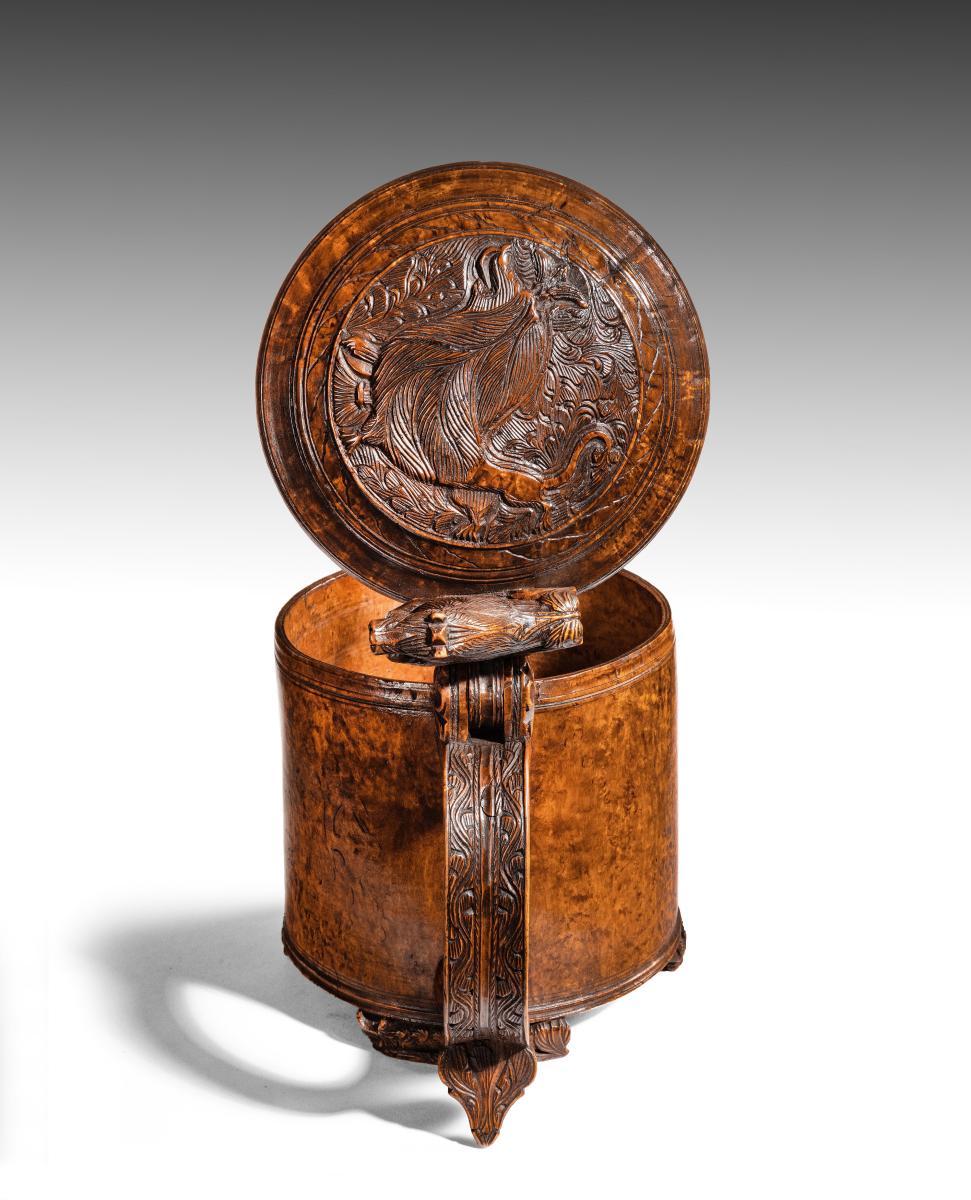
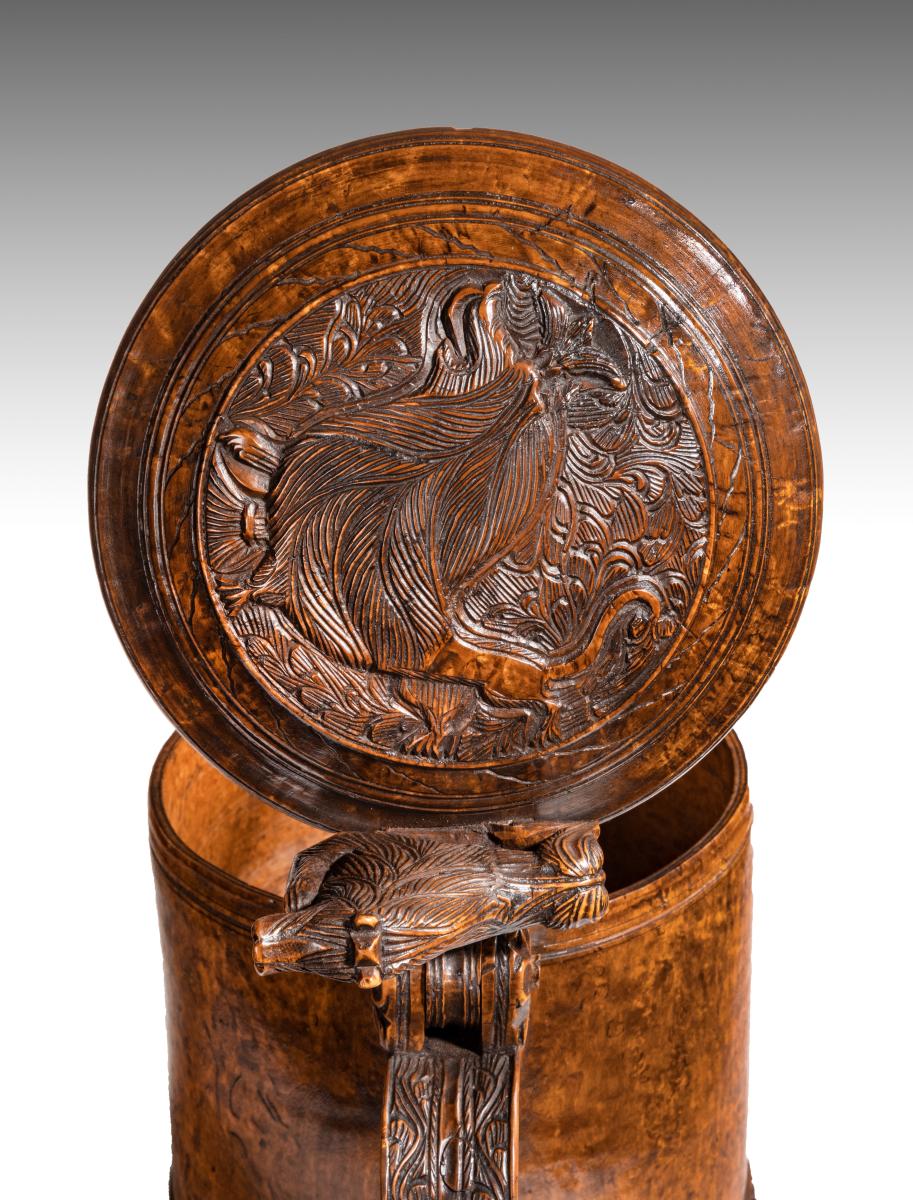
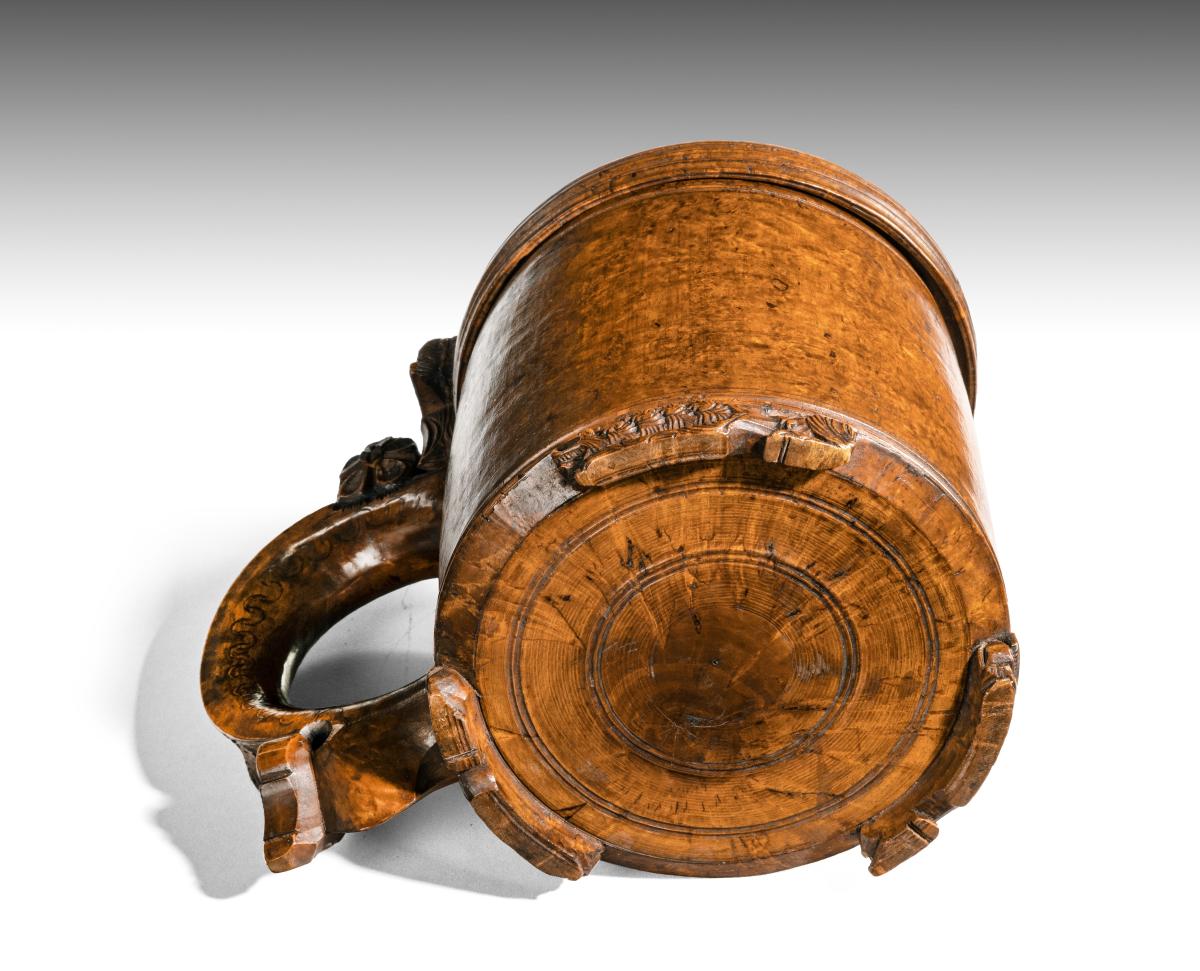
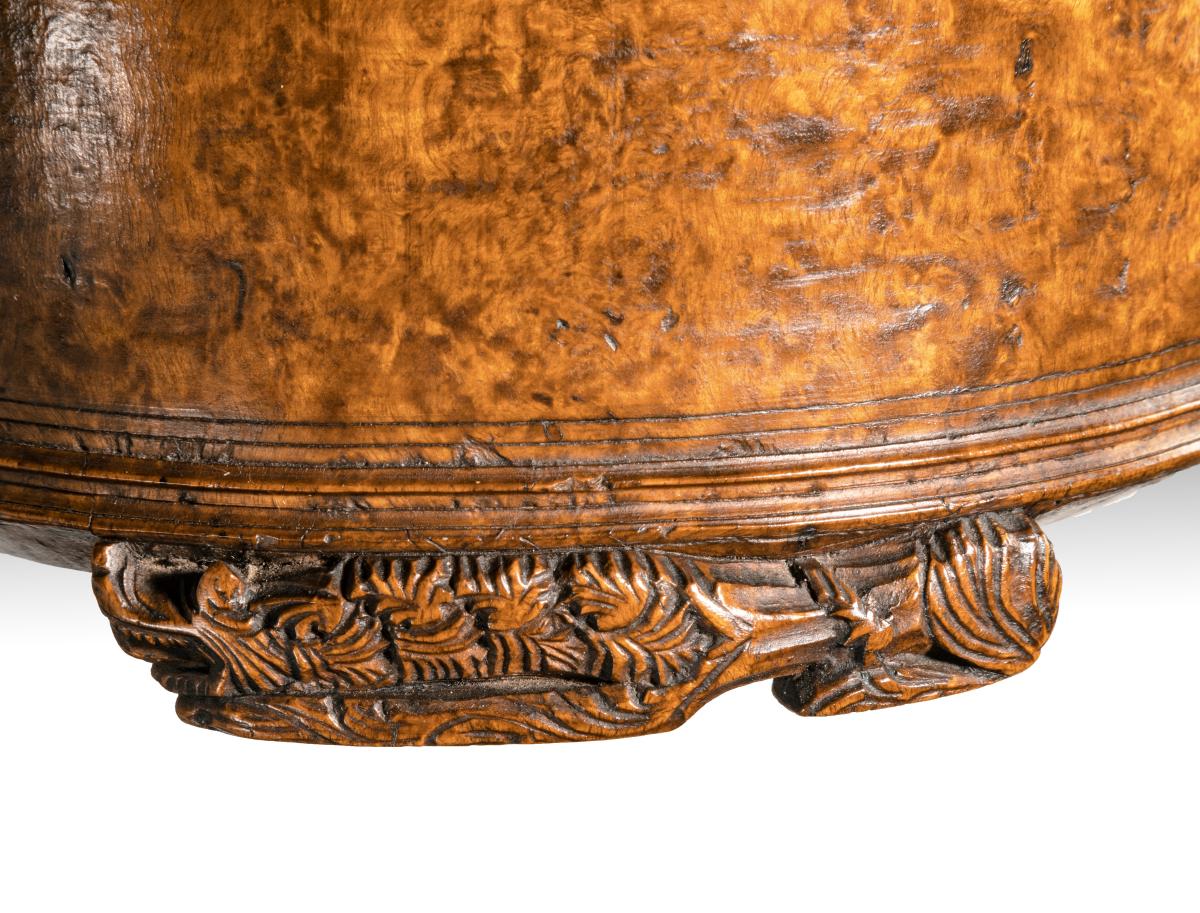
Price on application
This object includes complimentary, Insured Shipping / Delivery within the UK
This object is eligible for a Certificate of BADA Provenance
The BADA Standard
- Since 1918, BADA has been the leading association for the antiques and fine art trade
- Members are elected for their knowledge, integrity and quality of stock
- Our clients are protected by BADA’s code of conduct
- Our dealers’ membership is reviewed and renewed annually
- Bada.org is a non-profit site: clients deal directly with members and they pay no hidden fees
18th Century Norwegian Birchwood Peg Tankard.
NORWAY, CIRCA 1750.
The gently domed hinged lid carved in relief with a stylised lion against a foliate background. The large handle carved with scrolling patterns and topped with a thumb piece decorated with a lion holding an orb between its front paws. Raised and supported on three recumbent lion feet.
Norwegian Ceremonial ‘Lion’ Peg Tankards: Such tankards were made of silver as well as finely figured wood and the earliest date to the 17th century. The lion – the Royal Norwegian emblem – was often used as a national symbol on these tankards. In Norway, it was the custom for such ceremonial tankards to be used at wedding feasts. Peg tankards received their name from the being marked inside with a series of pegs or pins, fixed into the interior at regular intervals. This tankard has regular markings and such a tankard would have been filled with ale, cider or wine and then passed from hand to hand during the feast, each guest draining enough liquid until the next marker was showing. The generous proportions of the tankard and the size of each measure of alcohol suggest that it would have been rather difficult to stay sober.
Edward H. Pinto comments that ‘[w]ooden tankards were the commonest drinking vessels of North-west Europe over many centuries’. He describes the way in which they were manufactured: ‘They were made in three parts-the turned tankard or cup, the handle pegged on, which includes half the wood hinge, and the lid, which incorporates the ornamental thumb lift and the other half of the hinge’ ‘Treen and Other Wooden Bygones’ (Bell & Hyman Ltd., London, 1979), pp.57-58. He illustrates a number of such drinking vessels in plate 45. The two large lion tankards – on the right hand side of the upper shelf – ‘are of a type well known in the 18th century and earlier’ (ibid, p.58). The taller of the two tankards, ‘supported on lions couchant’, is dated 1809. He comments that such tankards: ‘usually have a lion or a coat of arms carved in relief on the lid, a lion rampant acting as thumb lift, and sometimes the lion couchant as feet.’ Such tankards were often dated and ‘early specimens may be lined with pitch and fitted with a row of pegs to show the limit to which each drinker should go’ (ibid, p.58).
Owen Evan-Thomas illustrates a similar tankard, which he describes as Flemish, in ‘Domestic Utensils of Wood’ (Stobart Davies, Hertford, 1992), plate 20, pp.51-52.
Dimensions
25 x 25 x 16.5 cmPrice on application
This object includes complimentary, Insured Shipping / Delivery within the UK
This object is eligible for a Certificate of BADA Provenance
Stock number
6763The BADA Standard
- Since 1918, BADA has been the leading association for the antiques and fine art trade
- Members are elected for their knowledge, integrity and quality of stock
- Our clients are protected by BADA’s code of conduct
- Our dealers’ membership is reviewed and renewed annually
- Bada.org is a non-profit site: clients deal directly with members and they pay no hidden fees


